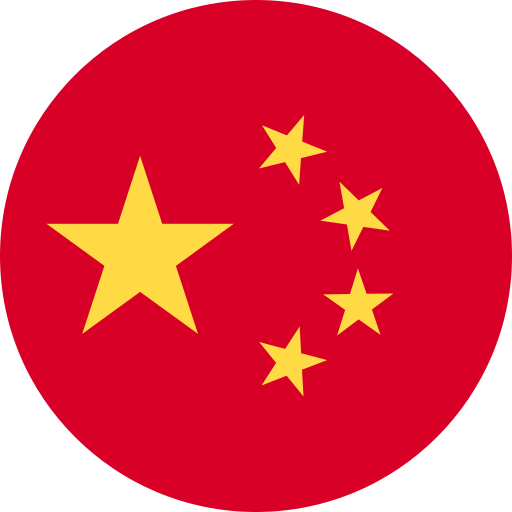Key Takeaways
- Cultural Influence: Chinese loanwords reflect deep cultural exchanges and historical interactions across various languages, enriching communication globally.
- Common Examples: Notable terms like “kung fu,” “dim sum,” and “kanji” illustrate the impact of Chinese vocabulary in English, Japanese, Korean, and Vietnamese languages.
- Areas of Impact: Loanwords are prevalent in cuisine, arts, culture, philosophy, and religion, showcasing their integration into everyday language and discussions.
- Historical Context: The adoption of Chinese loanwords dates back to trade routes like the Silk Road and has evolved with globalization’s influence on modern language.
- Linguistic Significance: These borrowed terms allow for precise expression of unique concepts that native words may not convey effectively.
- Cross-Cultural Connection: Understanding these loanwords fosters deeper appreciation for diverse cultures while promoting better personal and professional relationships.
Ever wondered how Chinese loanwords have woven their way into other languages? You might be surprised to find out just how influential these terms have become across the globe. From culinary delights to cultural concepts, Chinese vocabulary enriches communication in unexpected ways.
Overview Of Chinese Loanwords In Other Languages
Chinese loanwords significantly enrich many languages, reflecting cultural exchanges and historical interactions. These words often convey specific meanings that native terms can’t capture.
Common Languages with Chinese Loanwords
- English: Terms like “kung fu” and “dim sum” highlight Chinese cuisine and martial arts.
- Japanese: The word “kanji,” referring to characters borrowed from Chinese writing, plays a vital role in the language’s structure.
- Korean: Words such as “gukbap,” meaning soup with rice, showcase culinary influences.
- Vietnamese: Many vocabulary items derive from Chinese roots, including “tiếng Trung,” which means the Chinese language.
Areas of Influence
- Cuisine: Food-related terms proliferate across languages due to global interest in Asian cuisine.
- Arts and Culture: Concepts like “feng shui” or “taiji” have found their way into everyday discussions worldwide.
- Philosophy and Religion: Terms related to Confucianism or Taoism illustrate deeper cultural philosophies.
Understanding these loanwords enhances your appreciation for cross-cultural communication. Engaging with these terms allows you to connect more deeply with various cultures around the world, enriching both personal experiences and professional endeavors.
Historical Context
Chinese loanwords have a rich history, revealing deep cultural exchanges and interactions. They’ve significantly influenced various languages over centuries, reflecting trade routes and migration patterns.
Early Influences
Early influences of Chinese loanwords emerged through trade and cultural encounters along the Silk Road. Merchants and travelers introduced terms related to goods such as silk, tea, and spices into languages like Persian and Arabic. These words often carried specific meanings that native terms couldn’t express, enriching local vocabularies. For instance, the term “tea” derived from the Chinese word “chá,” highlighting how a simple beverage transformed language across continents.
Modern Contributions
Modern contributions of Chinese loanwords stem from globalization and increased cultural exchange in recent decades. As China plays an ever-expanding role in global commerce and culture, many foreign languages integrate terminology related to technology, cuisine, and philosophy. Terms like “kung fu” in English or “kanji” in Japanese reflect this trend. These words not only convey unique concepts but also foster cross-cultural understanding by bridging language gaps between communities worldwide.
Examples Of Chinese Loanwords
Chinese loanwords enrich many languages, showcasing the impact of cultural exchange and historical interactions. Here are some notable examples across different languages.
In English
English incorporates several Chinese loanwords, particularly in culinary terms and martial arts. Common examples include:
- Kung fu: This term refers to traditional Chinese martial arts, embodying skill achieved through practice.
- Dim sum: A style of dining featuring small dishes served with tea, popular in various cultures.
- Chow mein: A dish comprising stir-fried noodles, widely recognized for its versatility and flavor.
In Japanese
Japanese also features numerous Chinese loanwords, especially in writing systems and terminology. Key examples include:
- Kanji: The characters borrowed from Chinese that represent words or ideas, forming a significant part of the Japanese writing system.
- Bunka (文化): Meaning culture, this term reflects the blend of influences shaping Japan’s identity.
- Shūkyō (宗教): Referring to religion, it highlights philosophical concepts rooted in ancient exchanges.
In Other Languages
Various other languages have adopted Chinese loanwords as well. Some prominent instances involve:
- Korean:
- Gukbap (국밥): A popular rice soup dish that showcases Korean culinary traditions influenced by China.
- Hanja (한자): Characters derived from Chinese used in Korean writing.
- Vietnamese:
- Tiếng Trung: Meaning Mandarin language; it demonstrates the linguistic connection between Vietnamese and Chinese culture.
- Phở: A famous noodle soup that has become synonymous with Vietnamese cuisine but carries roots traced back to China.
These examples illustrate how deeply intertwined language and culture can be across borders. Understanding these terms enhances appreciation for cross-cultural communication while providing insights into shared histories.
Impact On Language And Culture
Chinese loanwords significantly shape languages and cultures around the globe. Their presence reflects cultural exchanges that span centuries, fostering communication across different communities.
Linguistic Significance
Linguistically, Chinese loanwords enrich vocabulary in various languages. For instance, English adopts terms like “kung fu” and “dim sum,” which convey specific cultural practices and culinary delights that native words often can’t express. Japanese incorporates “kanji,” adding depth to its writing system through the use of Chinese characters. Korean features terms such as “gukbap” (rice soup) and “hanja,” emphasizing historical ties between the two cultures. Each borrowed word serves a unique purpose, allowing speakers to articulate concepts from Chinese culture more accurately.
Cultural Exchange
Culturally, these loanwords act as bridges between societies. They not only introduce new ideas but also enhance appreciation for shared histories. For example, when you hear “phở” in Vietnamese cuisine or see “bunka” (culture) in Japanese discussions, you’re witnessing a rich tapestry of influence woven over time through trade routes and migration patterns. These exchanges foster understanding and respect among different peoples by highlighting what unites them rather than what divides them.
In essence, recognizing the significance of Chinese loanwords allows for deeper connections with diverse cultures, enriching both personal interactions and professional collaborations across borders.
Conclusion
Chinese loanwords play a crucial role in shaping the vocabulary of many languages around the world. By incorporating these terms you gain access to rich cultural nuances that deepen your understanding of diverse traditions and ideas.
As globalization continues to connect us, the relevance of these loanwords only grows. They not only enhance communication but also foster respect among various cultures. Embracing this linguistic diversity enables you to navigate cross-cultural interactions with greater ease and appreciation.
Recognizing the significance of Chinese loanwords opens doors to a more profound connection with global communities enriching both personal and professional experiences along the way.
Frequently Asked Questions
What are Chinese loanwords?
Chinese loanwords are terms borrowed from the Chinese language that have been adopted into other languages. They often convey specific meanings or cultural concepts that native words may not capture, enriching the vocabulary of the borrowing language.
Why are Chinese loanwords important?
These loanwords play a crucial role in cross-cultural communication, reflecting historical exchanges and interactions. They help speakers articulate unique ideas from Chinese culture, fostering understanding and appreciation among diverse communities.
Which languages commonly incorporate Chinese loanwords?
Languages like English, Japanese, Korean, and Vietnamese frequently include Chinese loanwords. For example, English features “kung fu” and “dim sum,” while Japanese incorporates terms like “kanji.”
How did trade influence the adoption of Chinese loanwords?
Historically, trade routes such as the Silk Road facilitated cultural exchanges where goods brought along associated terminology. This led to the integration of various Chinese terms into local languages across regions.
How do modern influences affect the use of Chinese loanwords?
Globalization has increased cultural exchange between countries. As societies interact more through technology, cuisine, and philosophy, new Chinese terms continue to be integrated into multiple languages worldwide.
Can you provide examples of significant Chinese loanwords?
Significant examples include “kung fu” (martial arts) and “dim sum” (cuisine) in English; “kanji” (characters) in Japanese; “gukbap” (rice soup) in Korean; and “phở” (noodle soup) in Vietnamese.
How do these loans enhance personal experiences?
Understanding and using these loanwords can deepen connections with different cultures. It enriches personal interactions by allowing individuals to communicate complex ideas rooted in shared histories effectively.
Are there areas beyond cuisine where these words impact language?
Yes! Besides cuisine, areas like arts & culture as well as philosophy & religion also integrate numerous Chinese loanwords that encapsulate unique concepts reflective of their origins.







